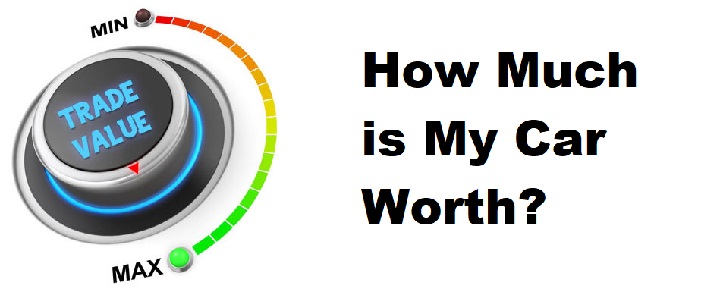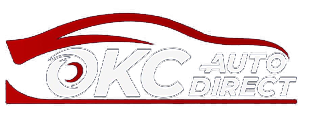WHAT'S MY CAR WORTH?

With all the information available to consumers today it is still difficult to determine the value of your car. You have Kelley Blue Book, Edmunds, Black Book, NADA, and so on when it comes to evaluating the value of your current vehicle. You would think that all these tools would give the same value since they do the same thing but what you will come to find is that they are all different, and all different from what you can expect if you trade your car in on a vehicle purchase. Let's take a look at what some of these tools use to come up with the value of your car and what makes them different from a dealer.
Kelley Blue Book
Kelley Blue Book, or maybe better known as KBB, is one of the most used appraisal tools out there. The website receives millions of visits a month, and the majority of them are to get an estimate on the value of a vehicle. KBB receives information from all over the world to help value used cars. They get prices from auctions, dealers, manufacturers, and private party transactions that all go into their algorithm for determining your car's value. The algorithm KBB uses takes the pricing information along with, trends, the current economic situation, time of year, and where you are located at to give you the estimate you see after entering your vehicles information.
Edmunds
Edmunds.com is another trusted tool like Kelley Blue Book. There are experts, with years of automotive experience, that agree that Edmunds is the most accurate when it comes to valuing a vehicle. Edmunds receives industry information similar to KBB to evaluate vehicles, but Edmunds offers an extra category for rating your vehicles condition when compared to KBB, they offer 5 categories instead of 4. This can allow consumers to be even more accurate when rating the condition of their vehicle, or can create more confusion or indecisiveness by adding more choices for someone to choose from. We'll look at how peope rate the condition of their car a little later on in here.
NADA Guides
One of the oldest vehicle value guides out there, NADA, or National Automotive Dealer Association, was originally designed for just the dealer members of the trade group. NADA pricing is often higher than KBB or Edmunds since NADA values vehicles as they are all in "very clean condition". You should remember this when consulting NADA for your vehicles value and know that the value you receive from there may need to be adjusted down.
Values for Used Cars
Here are some values you will see from different books and what they mean when you see them.
Some Issues When Using Evaluation Tools
Here are some things to consider when valuing your car online that can effect the accuracy.
Lag Time
It takes time for pricing and other data to be analyzed by any of these tools. Therefore prices listed may not always reflect the actual market due to ever changing trends and economic conditions.
Consumer Bias
Remember above where I said we would come back around to rating the condition of your vehicle? Well here it is. A majority of people believe there vehicle to be in better condition than it really is, and there is sentimental value and the fact that it is your car that plays into that. Misjudging your vehicles condition though can lead to the trade-in value or purchase value you see to be incorrect, your expectations won't match the reality of what your vehicle is actually worth.
Dealers Don't Used These Tools
The thing causing the biggest difference in what these tools value your vehicle at and what a dealer values your vehicle at is that dealers don't use them. Most dealers use programs and data that are not available to the public. There are market research tools that compare similar vehicles to yours that are being sold inside a market area, similar vehicles and the values they are being sold for at auctions (namely Manheim), similar vehicles and their demand inside a market area, and etc. Your local dealer is going to know more up to date information about their local market than any tool you could use online.
Bottom Line
All the tools online are great to use to get a general idea of your vehicles value, but don't just look at the one with the highest value and think thats it. Look at a few different ones and averge the values you are seeing and that is probably the best estimate you can have. Also be sure you are representing the condition of your car correctly when using one of these tools. It's hard to look at your vehicle objectively at times but be sure to slow down and be honest with your self about it. Treat it as if you were looking at it to buy it. Lastly, although none of the top used car buying guides are perfect, when taken together—along with additional information gained from other websites and tools they can provide reasonably reliable and accurate information for your used car transaction.
OKC Auto Direct
Oklahoma City, OK 73129
Phone (405)724-9147
Store Hours
| Monday: | 9:00 AM - 6:00 PM |
| Tuesday: | 9:00 AM - 6:00 PM |
| Wednesday: | 9:00 AM - 6:00 PM |
| Thursday: | 9:00 AM - 6:00 PM |
| Friday: | 9:00 AM - 6:00 PM |
| Saturday: | 9:00 AM - 6:00 PM |
| Sunday: | CLOSED |

